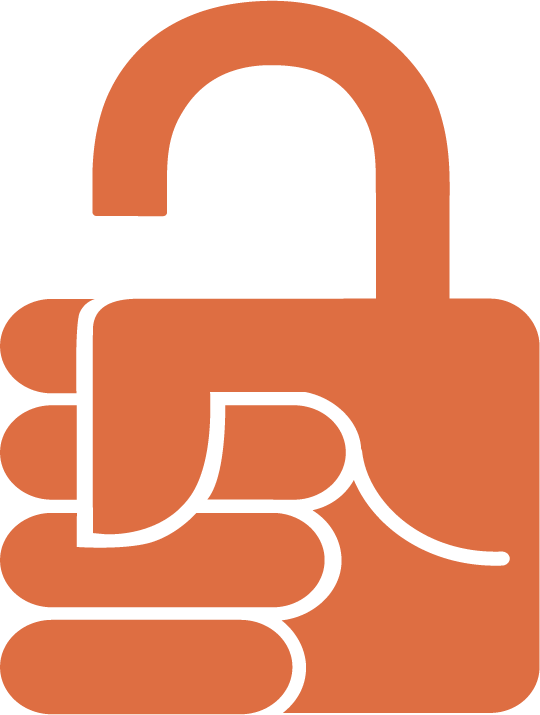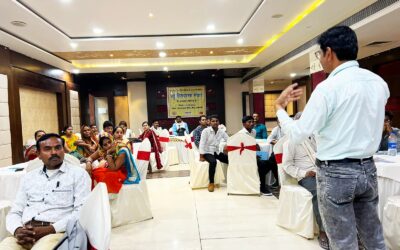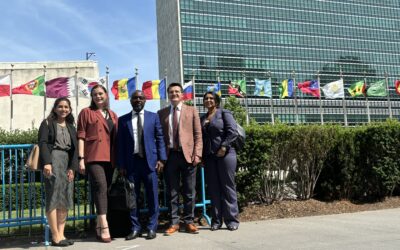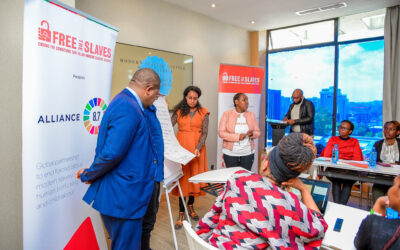Free the Slaves along with our partner organizations MSEMVS and Verite are running The Safe Migration to GCC program in the Mirzapur and Bhadohi districts of Uttar Pradesh. To learn more about the safe migration guide click here. If you’re interested in learning about how we’re working to prepare Indians for safe migration, click here!
Supported by Free the Slaves, Verite, and MSEMVS, The Community Vigilance Committees (CVC) have created 12 local-level Migration Vigilance Committees and counting! While raising awareness among communities on safe migration, CVC members realized that there was no mechanism in place for supporting and tracking the blue-collar workers who intend to migrate to other countries. They stressed the need for a committee at the village level, which will be given the responsibility of assisting any potential migrant in need.
So what do the Migration Vigilance Committees (MVCs) do? With the help of our supporters, MVC’s are responsible for…
- Tracking of the migrant workers migrating from their village.
- Awareness raising and ensuring safe migration of the migrants by connecting them with the government mechanisms.
- Raising the issue of unsafe international migration and sharing the ground reality during the departmental meetings with the higher authorities.
- Conducting monthly meetings to collect updates and to collect information about any burning case from the community members, which needs immediate support from the government authorities. (The responsibility of conducting and coordinating these monthly meetings will be of the trained CVC members of the community).
- Any other related activities needed to support migrants
Ideally, this inclusive committee should consist of government stakeholders as well as community members who can bridge the gap between the government authorities and the community members. With this, the idea of the Migrant Vigilance Committee and the CVC members agreed to expand the involvement of members in the MVC.
So, who is involved with the MVC? Every village MVC includes…
- The village head (local government – Panchayati Raj Institution)
- Accredited Social Health Activist (ASHA) (Health Department)
- Representative of the Integrated Child Development Scheme (ICDS)
- Rojgar Sevak (Labor Department)
- CVC members (2)
- General community member (1)
CVC leaders held many one-on-one meetings with village heads and other committee members to discuss the formation of Migrant Vigilance Committees (MVCs) in the villages. The goal of these meetings was to inform the committee members about the current situations of international migration in their villages and share the importance of a Migrant Vigilance Committee in their area. Following these efforts, the MVCs are being established in villages all over the region!
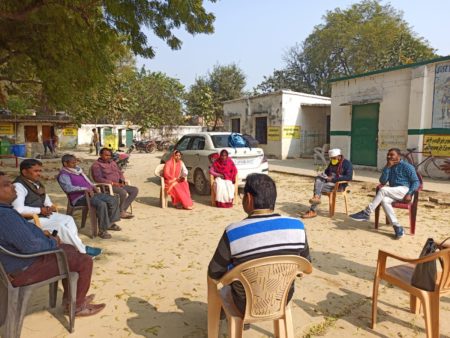
Safe migration is a basic human right, this sustainable grassroots structure of MVC embedded in local communities and local government ensures that the current and future migrants receive timely guidance and oversight while undertaking migration for work.
Kuldeep Singh Chauhan
Regional Director for Asia | Free the Slaves
